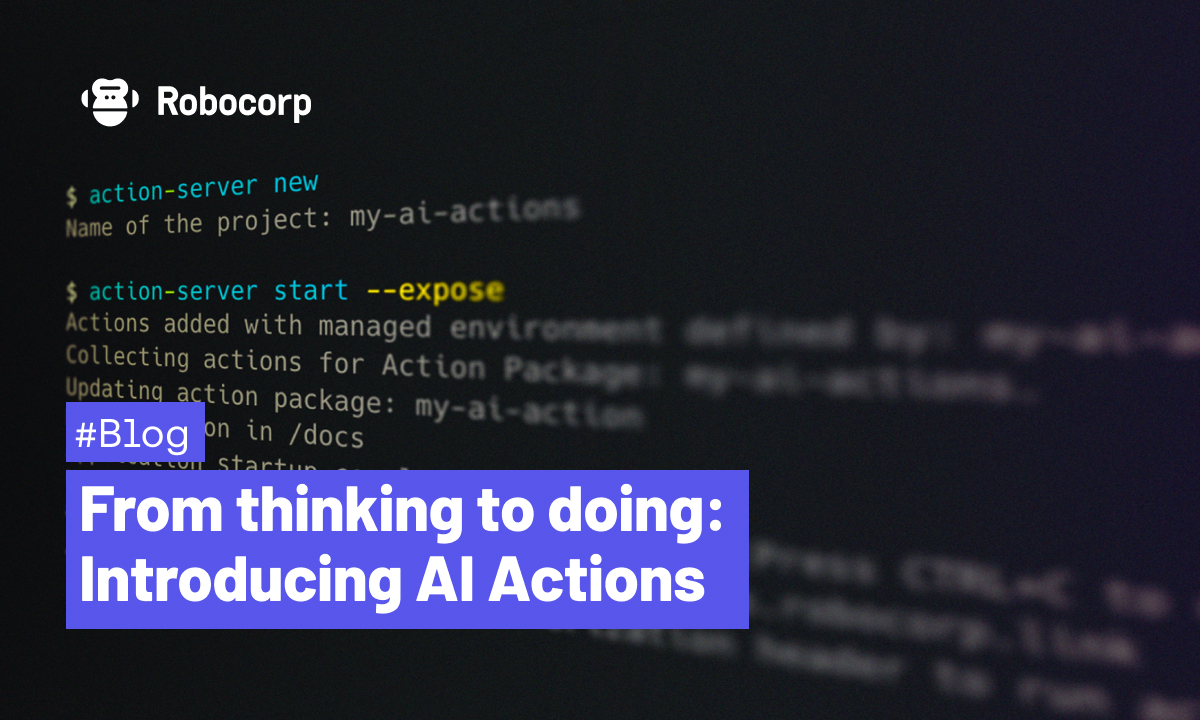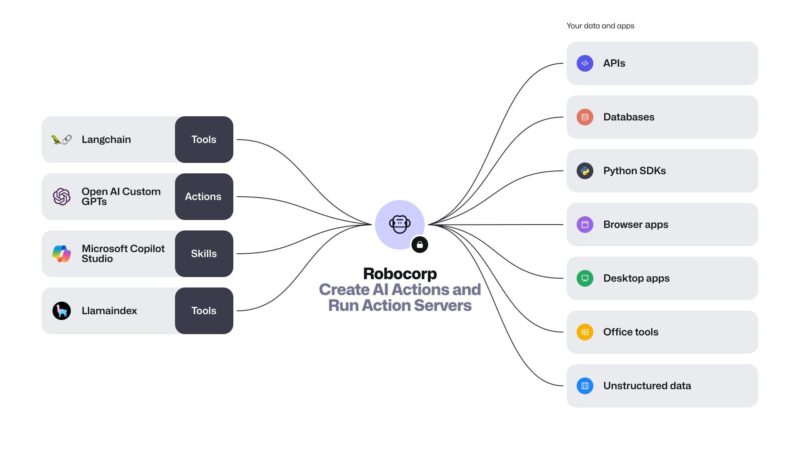From thinking to doing: Introducing AI Actions
AI Actions transform LLMs from information processors to active participants in enterprise systems and enable completely new and practical use-cases for Generative AI.

Generative AI primarily focuses on retrieving and understanding information, aiding in tasks like coding, marketing, and sales. However, its potential extends beyond just generating and analyzing data. The future of AI lies in its ability to interact with real-world systems. While we’re familiar with AI applications like ChatGPT, which use Python interpreters or Google search, the next step is to integrate AI into enterprise systems, enabling it to not only instruct but to complete tasks on behalf of users.
AI Actions: Bridging the Gap in Enterprise Systems
To safely and effectively bring AI into enterprise environments, we propose a new paradigm: “AI Actions.” AI Actions consist of capabilities, workflows, and automation that can be securely exposed to AI apps or agents. These actions are defined by their inputs and outputs, described in natural language, enabling AI apps to comprehend and utilize them. Actions are pre-defined code snippets executed in a controlled environment, equipped with access rights, audit trails, and necessary controls.
While actions share similarities with tools and function calling in frameworks like Langchain, Llamaindex, and Microsoft Copilot Studio, they provide additional benefits. Actions can enforce strict user approval before execution and operate within a dedicated runtime separate from the AI app, ensuring all required controls, authentication, and access rights are in place. Actions can range from simple tasks like fetching data over an API to complex operations such as creating a new purchase order in SAP. They can be synchronous or asynchronous, stateful or stateless.

The Advantages and Open-Source Approach
Using pre-defined AI Actions instead of generating code on the fly has a number of benefits, including:
- Ensuring the accuracy of outcomes
- Understanding and strictly enforcing the desired behavior
- Reusing Actions across multiple AI apps
- Enforcing human validation
- Managing authentication to 3rd party systems
- Achieving fast and scalable performance
- Providing observability to Actions
This approach also addresses the needs of enterprise decision-makers who emphasize the importance of robust AI integration into their systems. To foster innovation and collaboration we made our AI Action framework open-source, inviting developers to contribute and expand its capabilities.
Want to learn more? Register now for our next Product Hour Live, where we will unveil what this means in practice!
In summary, AI Actions represent a significant leap in AI’s evolution, offering a controlled and efficient way to integrate AI into enterprise systems. This new paradigm paves the way for AI to move from an advisor to an actor in the business world, harnessing its full potential in practical and impactful ways.
